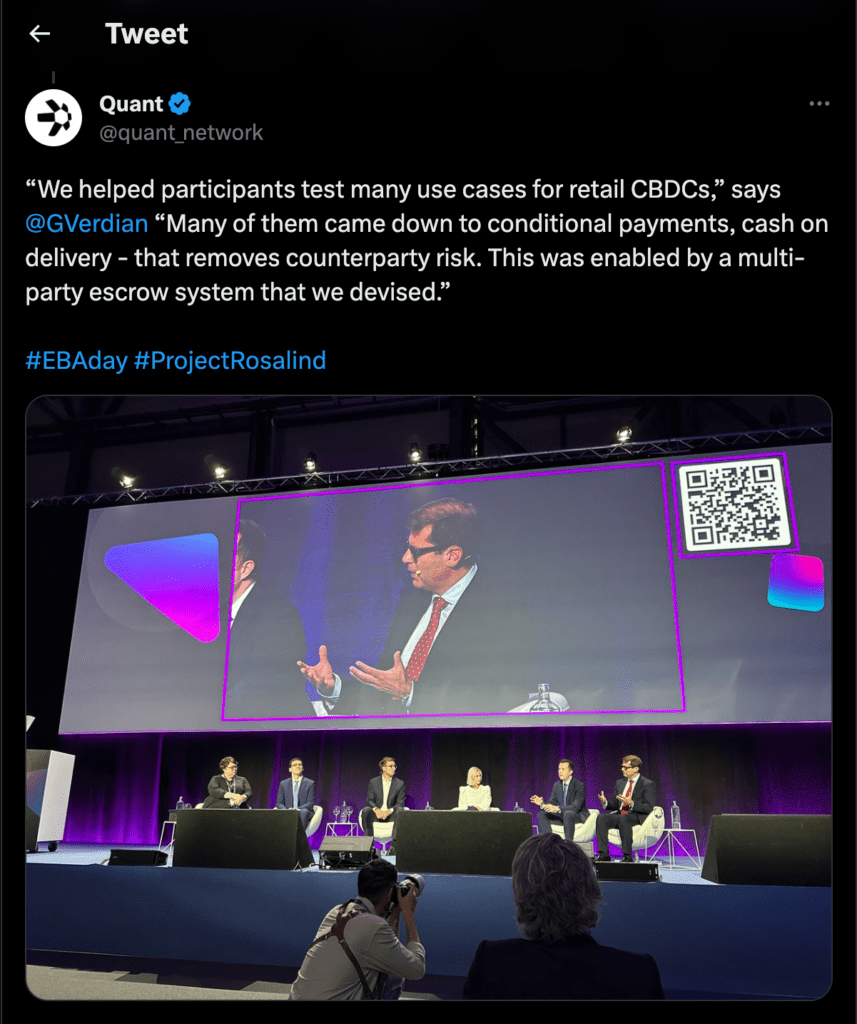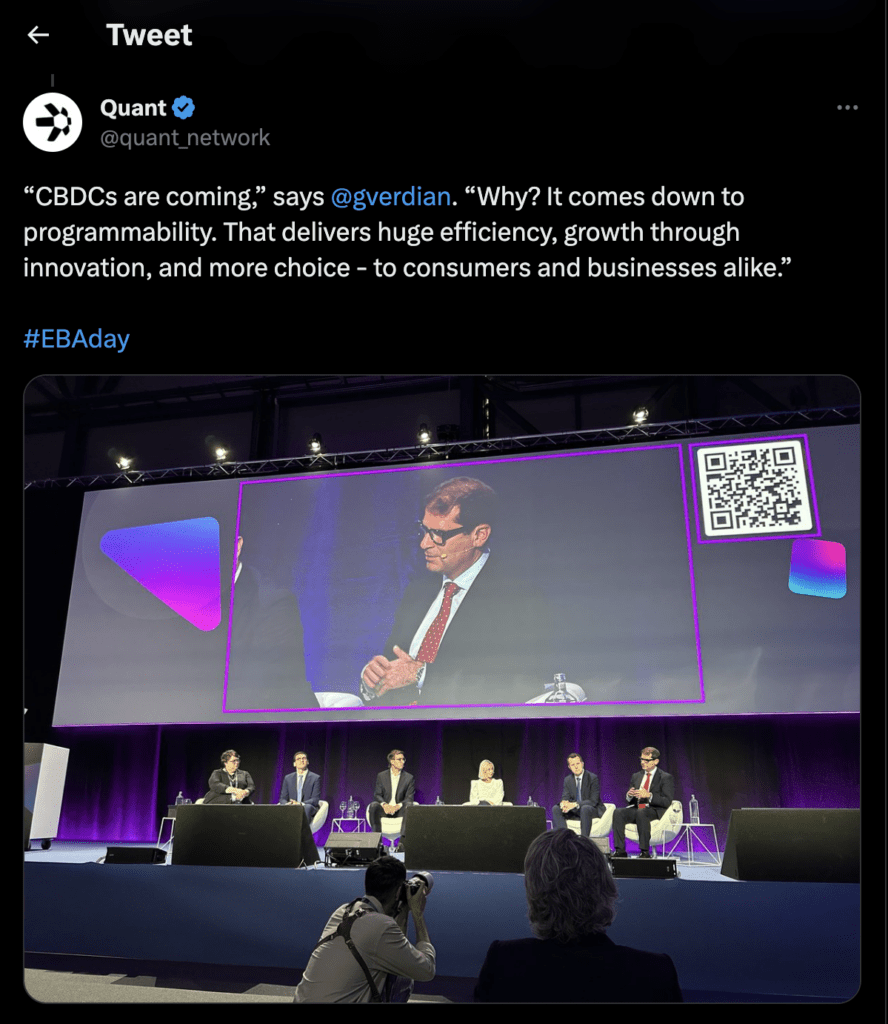Quant was at the heart of the conversation about central bank digital currencies during the Euro Banking Association’s annual conference and exhibition in June.
Last month, members of the Euro Banking Association gathered in Madrid for their annual conference. The Quant team was there – both as exhibitors and speakers – to take part in this critical dialogue on the future of payments.

During a busy two days, the Quant stand welcomed EBA members keen to learn more about our work on the UK’s retail central bank digital currency, to discuss how they could leverage their own regulated stablecoins or tokenised deposits, and to see first-hand how simple issuing and managing tokens is using our newly launched Overledger Platform.
Meanwhile on the conference agenda, in the final session of day one, ‘What is the outlook for CBDCs in Europe?’, our founder and CEO Gilbert Verdian was part of a panel of experts discussing where CBDCs are heading in Europe and what possibilities could arise for banks, merchants, and consumers in the future.
Moderated by deputy editor of The Banker, Liz Lumley, the other speakers were Alessandro Agnoletti, group head of digital currency and DLT at Nexi, Manuel Klein, product manager of blockchain solutions and digital currencies at Deutsche Bank, Emma Landrault, vice president of J.P. Morgan Onyx Coin Systems, and Daniel McLean, digital euro and business model lead at European Central Bank.
When asked about CBDCs, Landrault commented that she sees trends in commercial bank tokens and tokenised deposits: “The asset tokenisation ecosystem is growing. We are seeing a growth in the conversation around tokenised deposits and commercial bank tokens, how we can design commercial bank money and central bank money on chain. We are starting to see the whole commercial and central bank money come onto this digitised conversation.”
On the development of the digital euro, McLean said that it is in progress and the Governing Council will soon move on to the next stage of the process and provide a digital framework for the digital euro. “A digital central bank currency is needed. We believe its future, and we believe the central bank needs in addition to the wholesale components, needs to also offer a digital alternative to cash for the future.”
Gilbert agreed and was keen to explain the tangible benefits. “CBDCs are coming,” he said. “Why? It comes down to programmability. That delivers huge efficiency, growth through innovation, and more choice – to consumers and businesses alike.”

Building on this, McLean said that now is the time to act to provide options to the consumer. He boiled the essence of retail CBDCs down to trust, in that users will have multiple options in payments, and the digital currency will be sources from an institution that they can trust.
Gilbert described Europe as having a very mature financial system that is at the forefront of innovative global payment systems, therefore primed to lead in CBDCs.
“The ecosystem is ready for the next transformation, for the next generation of money. What we have seen with CBDCs is they are coming. It really comes down to putting logic and programmability at the core of money so that you can automate workflows and solve challenges of fraud in a new way, use innovation from the private sector to create new flows, new journeys, new experiences on retail and wholesale sides,” Gilbert said. “This leads to a huge efficiency in the financial system and growth through innovation. It leads to better choice to consumers and businesses because they can automate a whole bunch of things that they couldn’t before.”

Klein remarked that there are processes involved that can increase privacy involved when using digital tokens that are still in the research process. He described tokens that can be transferred digitally and are assigned to numerous public addresses, but the provider would not be able to know who held those tokens or how much they spent. He expands on the developments in an in-built privacy on backend infrastructure within the eurosystem where the European Central Bank would not be able to know the details of users’ transactions:
“One of the advantages of this new technology is to have inbuilt privacy where the ECB cannot know exactly how much money I have for what I spent. Obviously, the intermediaries that provide these accounts are these wallets would have to do image checks and NFC checks. The legislator currently looks into whether this privacy can also be increased up to a certain threshold, especially with the digital bureau, so that you not only have higher privacy against the ECB, as the provider of the ledger, the backend ledger, but also against the intermediary that provides the wallet. I do think there is a possibility to create privacy in a digital central bank, digital currency system.”
Lumley concluded the discussion by asking when we are likely to see CBDCs in Europe. “It’s easier to issue a wholesale CBDC than a retail so that will likely come first but it will be followed very quickly by retail,” said Gilbert. “We’re already looking at the practical benefits so I expect CBDCs in large economies by the end of the decade.”

How Quant can help




